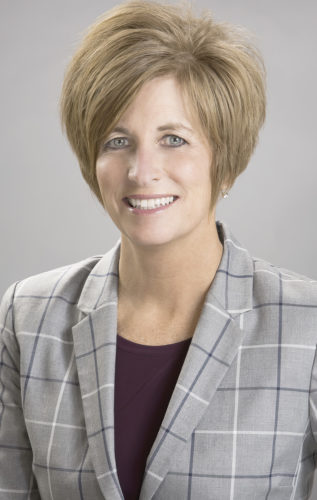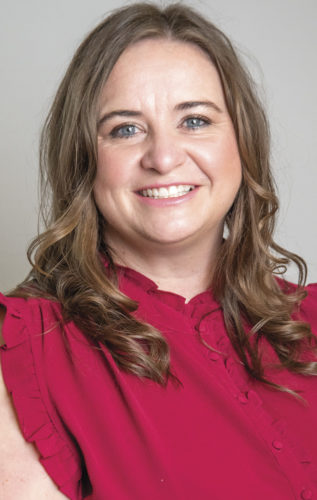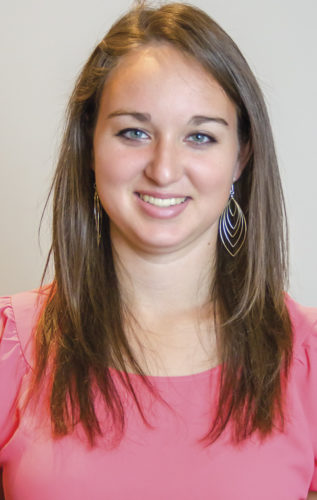The highlight of any year-end review is to look back and see how far we have come in the past 12 months. It’s been a year of growth for many dairies that have implemented modern technology through robot installations and much more. It’s been a year of growth for influencers who share their farm stories with huge audiences on social media. It’s been a year of growth for industry professionals who have researched ways to improve every facet of the dairy industry and shared their research results.
Progressive Dairy is excited to present the top 15 articles as viewed online over the past 12 months, along with updates on several of the articles.
 Photo provided by Kevin Petty.
Photo provided by Kevin Petty.
 Photo provided by Kevin Petty.
Photo provided by Kevin Petty.
The delicious cheese produced throughout Canada by artisan cheese makers with fresh milk from local cows caught everyone’s attention and brought in the most views on Progressive Dairy – Canada's website. Be sure to check out the 2022 list and support your local cheese makers this Christmas season and throughout the year.
 Since meeting in college, Scott and Lindy Brown have worked towards achieving their shared dream of owning and operating their own dairy farm in New Brunswick. Photo by Brady McCloskey.
Since meeting in college, Scott and Lindy Brown have worked towards achieving their shared dream of owning and operating their own dairy farm in New Brunswick. Photo by Brady McCloskey.
 Since meeting in college, Scott and Lindy Brown have worked towards achieving their shared dream of owning and operating their own dairy farm in New Brunswick. Photo by Brady McCloskey.
Since meeting in college, Scott and Lindy Brown have worked towards achieving their shared dream of owning and operating their own dairy farm in New Brunswick. Photo by Brady McCloskey.
Scott and Lindy Brown of New Brunswick shared their story of owning a dairy farm with step-by-step insights into how to plan, plan again and then be open to changing plans as ideas unfold. After purchasing their farm, they raised beef cattle and sheep. Their experience of selling their product in those industries further solidified their desire to have a dairy, as those markets are unpredictable. They are quick to credit the supply-management quota system as a key element in being able to start a dairy farm from scratch.
What do you think was key to your success in financial planning for your dairy?
“People can say what they want about a supply-managed sector, but in terms of stability, you can’t beat it. To know your market and to know there is a buyer for your product is invaluable to someone who is wanting to enter the dairy industry, especially one where the start-up costs are high.
"With the stability from supply management, even though our margins are not big, we have greater control over what our margin is. We can plan for it, and that allows us to sleep a little easier at night.”
—Lindy Brown, dairy producer, New Brunswick
The Browns further credit the Dairy Farmers of New Brunswick’s new entrant program, which matched the initial quota to 32 kilograms. Currently, the Browns have grown their quota to 44 kilograms, an increase they facilitated due to improvements in production as they have only added a few cows to the herd.
 Installing proper ventilation to reduce heat stress was a top priority when the Coddingtons planned their 2018 barn expansion. Photo provided by Kaitlyn Coddington.
Installing proper ventilation to reduce heat stress was a top priority when the Coddingtons planned their 2018 barn expansion. Photo provided by Kaitlyn Coddington.3. A big family with big goals: Coddington Farms builds a polled herd with low SCC
 Installing proper ventilation to reduce heat stress was a top priority when the Coddingtons planned their 2018 barn expansion. Photo provided by Kaitlyn Coddington.
Installing proper ventilation to reduce heat stress was a top priority when the Coddingtons planned their 2018 barn expansion. Photo provided by Kaitlyn Coddington.3. A big family with big goals: Coddington Farms builds a polled herd with low SCC
Tom and Kathleen Coddington work closely with their nine children to operate Coddington Farms in Melbourne, Quebec. Milking 300 Holsteins, they share a passion for dairy, are dedicated to continuous improvement of the farm and herd, and set ambitious goals. The Coddingtons decided to expand the freestall barn in 2018 and upgraded their parlour from a double-10 parallel parlour to a double-20 in 2020 (providing enough room to milk 600 cows).
Animal welfare is at the core of operational decisions and the rule is to not stress or rush the cows, which positively impacts milk quality. Switching to sand bedding helped lower their somatic cell count (SCC) and cases of mastitis, and strict milking procedures keep bulk tank bacterial levels low. The herd is nearly 80% A2A2 and polled, and they test for leukosis and neosporosis to be proactive in eliminating the diseases from the herd. Meagan (26), Jeremy (24), Kaitlyn (22) and Jessica (20) work full-time on the farm, and future farm management will depend on their younger sisters as they decide to become more involved on the farm.
An update from Coddington Farms:
- We’re now breeding horned bulls to our homogeneous polled heifers to diversify the genetics while still using polled genetics on the older animals. We’ve also been using more beef on the older cows. Genomics and milk recording/production are taken into consideration when breeding our cows to beef, polled or horned Holsteins or using sexed semen.
- We’re currently free of leukosis and neospora and are still preventively testing for both diseases – regardless of a negative status – to ensure that it is gone. We will stop testing for leukosis after having negative results for two years; as we are a closed herd, this will be easy to achieve.
- For the second year in a row, the farm received a Very Great Distinction certificate for its quality milk from Les Producteurs de lait du Québec (PLQ).
- My sister Julie has decided to go into the farm management technology program at McGill University, so she can join the family farm as well – another exciting happening for us here at the farm.
—Meagan Coddington, dairy producer, Quebec
 Photo by Mike Dixon.
Photo by Mike Dixon.
 Photo by Mike Dixon.
Photo by Mike Dixon.
The dairy sector faced its share of challenges in 2021, specifically in market growth, managing customer expectations and increased U.S. presence. Vincent Cloutier, senior adviser, agriculture and agri-food sector with National Bank, outlined what producers could expect to see in 2022:
- Growth challenge. Despite the implementation of the three trade agreements (CETA, CPTPP, CUSMA) increasing the volume of imports into Canada, the domestic demand should still leave room for growth in Canadian production, estimated at about 3% per year.
- Customer expectations. There will be a demand for a high-quality product at a competitive price while expectations continue to increase, not to mention a focus on the industry’s carbon footprint. Collaboration within the industry is more important than ever.
- American presence. The uncertainty of the impact from the volume of imports and international political and legal battles can be hard to predict. The value chain has demonstrated its ability to adapt and thrive in a changing environment.
One year later, where does the industry stand and what do you expect to see in 2023?
- The Bank of Canada wants to lower the rhythm of the economy through the increase of interest rates. It may not be as easy to get projects going with financing and growth, but it is possible to get through a tighter period. Agriculture is a solid industry, and we will go through this recession better than many other sectors of the economy.
- We are just getting out of socially crazy years due to the impact of COVID-19, the war and an era of inflation we haven’t seen in almost 40 years (interest rates are getting back to the level they were 15 years ago). Many of us have never gone through this, and it goes along with an era of record net agriculture revenues in 2020 and 2021, and they will still be rather good in 2022. Yes, we are going through troubled times, but much better than other industries.
- In 2022, despite concern about the free trade agreements (FTAs), there were two increases in the P5 (2% last spring and 2% in October) – production went up in Canada, which means that Canadian consumers want their products, which is very good news. When input costs went up, the cost of production went up, and the price of milk quickly adjusted to this new reality. We could notice again in 2023 how efficient the system is to meet the realities of the business environment. There is a great level of trust between the dairy industry and the Canadian consumer, but we will always have to work on maintaining it to reinforce this level of trust.
- 2023 may be a challenging year because the cost of production might stay high, and when loans are reviewed, the odds are that the rate will be higher than before. Having a tight management of expenses is nothing new, but next year it will be more important than ever. The balance sheet of the Canadian dairy industry is solid enough to face these kinds of shocks, just like it's been facing numerous shocks in the past.
—Vincent Cloutier, associate vice president and senior adviser, agriculture and agri-food sector with National Bank
 Jan Kielstra, known on YouTube as SaskDutch Kid, started uploading videos to the platform in 2019. Photo by Emma Ohirko.
Jan Kielstra, known on YouTube as SaskDutch Kid, started uploading videos to the platform in 2019. Photo by Emma Ohirko.5. SaskDutch Kid shares life as a dairy farmer with 170,000 subscribers
 Jan Kielstra, known on YouTube as SaskDutch Kid, started uploading videos to the platform in 2019. Photo by Emma Ohirko.
Jan Kielstra, known on YouTube as SaskDutch Kid, started uploading videos to the platform in 2019. Photo by Emma Ohirko.5. SaskDutch Kid shares life as a dairy farmer with 170,000 subscribers
Jan Kielstra, a young dairy farmer working on his family’s farm in Asquith, a small town west of Saskatoon, Saskatchewan, started a YouTube channel in 2019. He shares the farm’s day-to-day happenings under the name “SaskDutch Kid.”
Today, Kielstra’s channel boasts over 170,000 subscribers and includes over 250 videos, some of which have over 3 million views. He has also diversified the style of videos he posts and recently started posting “vlog-style" videos where he talks to the camera describing what is happening on the farm in real time.
Can you tell us about one of your best-watched videos?
“One of my most-watched videos was the fifth one I posted back in 2019, "Milking cows in a brand new parlour." Being one of my earliest videos, I was still getting used to talking to a camera. Nonetheless, the video has gained 3.1 million views since its upload. The video followed me around as I did an afternoon milking shift in our (at the time) 5-month-old parlour. It showed fetching cows and then the actual milking process. It was the first video that really showed off our new parlour, and I believe that’s why it took off like it did. The video has led to over 25,000 new subscribers to the channel.”
—Jan Kielstra, dairy producer, Saskatchewan, and SaskDutch Kid on YouTube
 After years visiting other farms as a hoof trimmer and feed consultant, Donald Russell of Dojo Holsteins took stock of other farms’ merits and shortcomings to carefully develop his now-patented barn design. Photo provided by Donald Russell.
After years visiting other farms as a hoof trimmer and feed consultant, Donald Russell of Dojo Holsteins took stock of other farms’ merits and shortcomings to carefully develop his now-patented barn design. Photo provided by Donald Russell.
 After years visiting other farms as a hoof trimmer and feed consultant, Donald Russell of Dojo Holsteins took stock of other farms’ merits and shortcomings to carefully develop his now-patented barn design. Photo provided by Donald Russell.
After years visiting other farms as a hoof trimmer and feed consultant, Donald Russell of Dojo Holsteins took stock of other farms’ merits and shortcomings to carefully develop his now-patented barn design. Photo provided by Donald Russell.
Donald Russell developed a barn concept to fulfill his vision to optimize cow housing and sustain a healthier, more comfortable herd. In 2018, he constructed a barn for his herd that is free of stalls and provides 58 square feet of space per cow. Instead of shavings, the wide-open area where the cows lie down uses 100% recycled fibre materials.
Without stalls, Russell says hock and leg injuries in his animals have completely disappeared, and he now observes his cows engaging in what he refers to as “nesting behaviour” where they move the base beneath them, make a complete circle, then lie down comfortably on their sides, something Russell believes has helped improved somatic cell count (SCC).
Russell joined Dairy Farmers of Canada’s sustainability advisory group and is also collecting data to support the notion that his barn emits significantly fewer methane and ammonia emissions than conventional housing styles. In line with the advisory group’s recommendations on the use of manure separation and composting to achieve reductions in greenhouse gas emissions, Russell practices hourly manure separation.
Where are you seeing the most reductions in methane and ammonia emissions in your barn compared to conventional housing styles?
"We know ammonia production is enhanced when solid and liquid excretions from lactating cows get mixed and stored under slatted floors or in manure storage pits and lagoons. When you keep the temperature right and mix other energy and fibre materials over days, you get more methane production, hence the ability to produce methane in digesters on farms.
"According to research provided to the Canadian Sustainable Advisory Group, the number one method in reducing greenhouse gases (GHG) in dairy barns is to separate the solids from the liquid on a continuous basis and keep them apart. We separate 100% of our manure on a continuous basis. This has several advantages:
- We use the solids as bedding.
- We compost what we don’t need in the barn.
- We require less than 2 acres per milking cow for nutrient management strategies. This is a big deal for farms that don’t have enough acres for their conventional housing practices.
"If you don’t have manure sitting in your barn or on your farm, you will have a lot less ammonia and definitely a lot less methane production.
"We recently had Alltech E-CO2 Dairy EA come into one of our barns and conduct a gCO2e/kg FPCM* assessment. The evaluation came to a result of 581 grams. The best 10% of results in Canada were in the 900-gram range. This evaluation is a clear indication of the impact this type of barn can have in making the dairy industry reach net zero by 2050."
*Note: (gCO2e/kg FPCM = grams of carbon dioxide equivalent per kilogram of fat- and protein-corrected milk produced. The sum of all emissions generated on-farm in 365 days, divided by the total volume of fat- and protein-corrected milk produced.)
—Donald Russell, Pasture Barn Designs
 To minimize labour requirements, Peter Ruiter installed swinging gates throughout his barn, allowing him to move his animals between pens with ease. Photo provided by Peter Ruiter.
To minimize labour requirements, Peter Ruiter installed swinging gates throughout his barn, allowing him to move his animals between pens with ease. Photo provided by Peter Ruiter.7. One-man show Peter Ruiter optimizes his facility for labour efficiency
 To minimize labour requirements, Peter Ruiter installed swinging gates throughout his barn, allowing him to move his animals between pens with ease. Photo provided by Peter Ruiter.
To minimize labour requirements, Peter Ruiter installed swinging gates throughout his barn, allowing him to move his animals between pens with ease. Photo provided by Peter Ruiter.7. One-man show Peter Ruiter optimizes his facility for labour efficiency
After losing his barn and 80 cows in a fire in 2017, Peter Ruiter decided to stay in the industry and build a barn that would maximize labour efficiency. A little over a year later, Ruiter was milking cows again at Blackrapids Farm, in Nepean, Ontario.
The new barn is home to 53 milking cows and one milking robot, with room for a second should the farm choose to expand in the future. The barn also features automated feeding and calf feeding.
Ruiter praises the barn’s robust system of swinging gates. He notes the three-way gate near the robotic milking system is a highlight of the facility’s labour-saving innovations. With a simple opening or closing of the three-way gate, he can move cows between the milking area, dry cow pens and calving area, requiring virtually zero labour.











